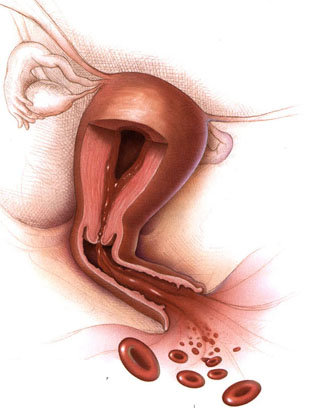Page Contents
OVERVIEW
This page is dedicated to covering the differential diagnosis for abnormal uterine bleeding (AUB). This differential will be organized by diagnostic modality.

WHAT ARE THE MAJOR CATEGORIES OF DIAGNOSTIC MODALITIES THAT ARE USED?
When thinking about the differential for abnormal uterine bleeding (AUB) the following diagnostic modalities come to mind:
- History And Physical
- Urine Studies
- Serum Studies
- Ultrasound
- Endometrial biopsy
DIAGNOSIS MADE WITH THE HISTORY AND PHYSICAL
Some causes of abnormal uterine bleeding (AUB) might not really require much a of a clinical workup (and are really more of a “clinical diagnosis” largely made from the history). With this in mind a clinical workup may still inform the diagnosis and can help rule out other causes of the patient’s presentation. Examples of these types of conditions that can cause abnormal uterine bleeding (AUB) are listed below.
- Anovulation: while not a specific diagnosis (but rather a category of diagnosis) it is important to realize that anovulation will be diagnosed by the history. Further workup can clarify the underlying reason behind the anovulation.
DIAGNOSIS MADE WITH URINE STUDIES
Urine pregnancy test: Really the main diagnosis that can be made with this study is pregnancy. A patient with AUB and a positive pregnancy test could have the following diagnosis (that require further investigation for more definitive diagnosis).
- Ectopic pregnancy
- Spontaneous abortion
DIAGNOSIS MADE WITH SERUM STUDIES
Urine Beta-hCG Test: Really the main diagnosis that can be made this study is pregnancy. A patient with AUB and a positive pregnancy test could have the following diagnosis (that require further investigation for more definitive diagnosis).
- Ectopic pregnancy
- Spontaneous abortion
DIAGNOSIS MADE WITH ULTRASOUND STUDIES
Abdominal and transvaginal ultrasound studies can be used to help diagnose various conditions in patients. Below are a list of causes of AUB that can be detected on ultrasound:
- Ectopic pregnancy (extrauterine pregnancy can be visualized)
- Spontaneous abortion (products of conception can be visualized)
- Uterine fibroids (structural anomaly can be visualized)
- Uterine polyps (structural anomaly can be visualized)
- Endometrial hyperplasia (the size of the endometrial strip can be measured)
- Adenomyosis (some signs such as myometrial heterogeneity can suggest this, MRI will be more diagnostic but often times is not indicated)
DIAGNOSIS MADE WITH AN ENDOMETRIAL BIOPSY
An endometrial biopsy can be an important part of an AUB workup. Once the biopsy is collected it can be used to diagnose the following conditions:
- Endometrial cancer
- Endometrial hyperplasia
Page Updated: 12.03.2016